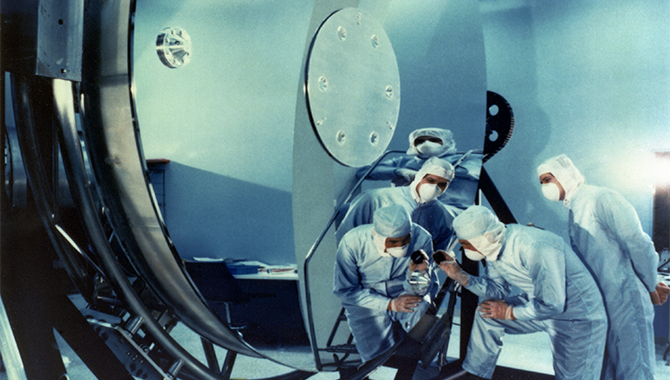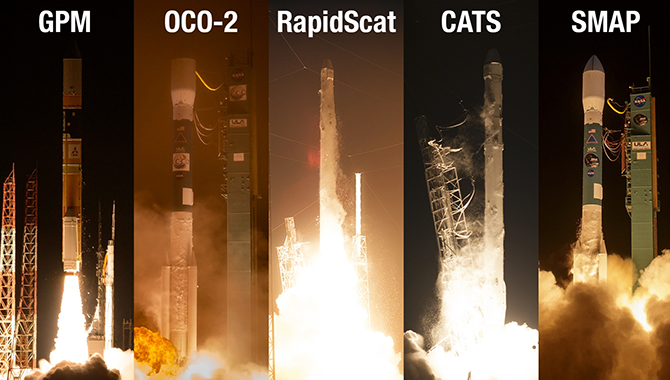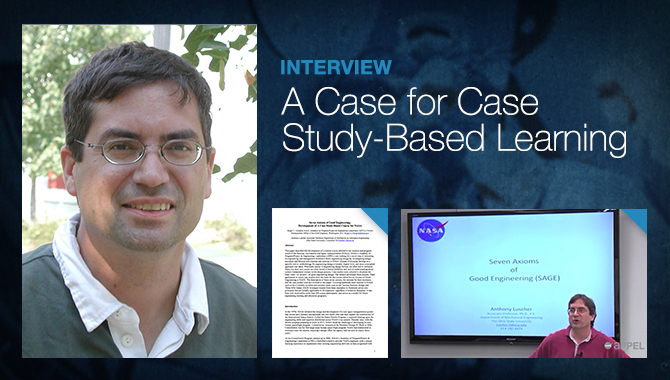
Artist’s impression of Orbiting Carbon Observatory-2 (OCO-2), which makes precise global measurements of atmospheric carbon dioxide (CO2) to help scientists better understand its sources and “sinks.”
Image Credit: NASA/JPL-Caltech
In 2009, the orbiting carbon conservatory (OCO) plunged into the ocean minutes after launch. A year later, the team was given the rare opportunity to rebuild and fly again.
OCO, an Earth System Science Pathfinder project run by the Jet Propulsion Laboratory (JPL), went down in February of 2009. With it went the hope of obtaining critical and urgent information about carbon dioxide (CO2) that could help the world’s scientific and political communities better understand how to address this key contributor to climate change. The three-spectrometer instrument on OCO, with its unprecedented sensitivity, had been poised to deliver the most detailed picture yet available of the behavior of this greenhouse gas.
The information from OCO was considered so critical that, three days after the launch mishap, a proposal for a replacement mission was sent to NASA Headquarters for review. On March 8, 2010, the news became official: Orbiting Carbon Observatory-2 (OCO-2) was a go.
This rare second chance to fly presented the OCO-2 team with unique opportunities and challenges. The first was to actively apply lessons learned and knowledge from their original mission to a second flight. While they benefitted from having gone through the project life cycle once, the OCO-2 “build to print” philosophy—which meant the new satellite would be an exact copy, to the extent possible, of the first OCO—directly opposed the notion of improving upon or deviating from the original mission plan. The second was an unexpected chance to work with a live datastream from another project. This gave the team an opportunity to improve raw data interpretation, fine-tune their scientific methods, and rework their software.
As they pushed to reach the launch pad a second time, the team strove to balance their “built to print” mandate with the need for intentional alterations—due to lessons learned from OCO—and unanticipated changes that emerged over time. Throughout, their focus remained firmly on maximizing the value of their mission.
Learn more about their experience: download the APPEL case study OCO-2: A Second Chance to Fly.
Read APPEL stories featuring interviews with OCO-2 Project Manager Ralph Basilio here and here, plus an interview with OCO-2 Mission Operations System Manager Patrick Guske here.
Explore the OCO-2 mission.









